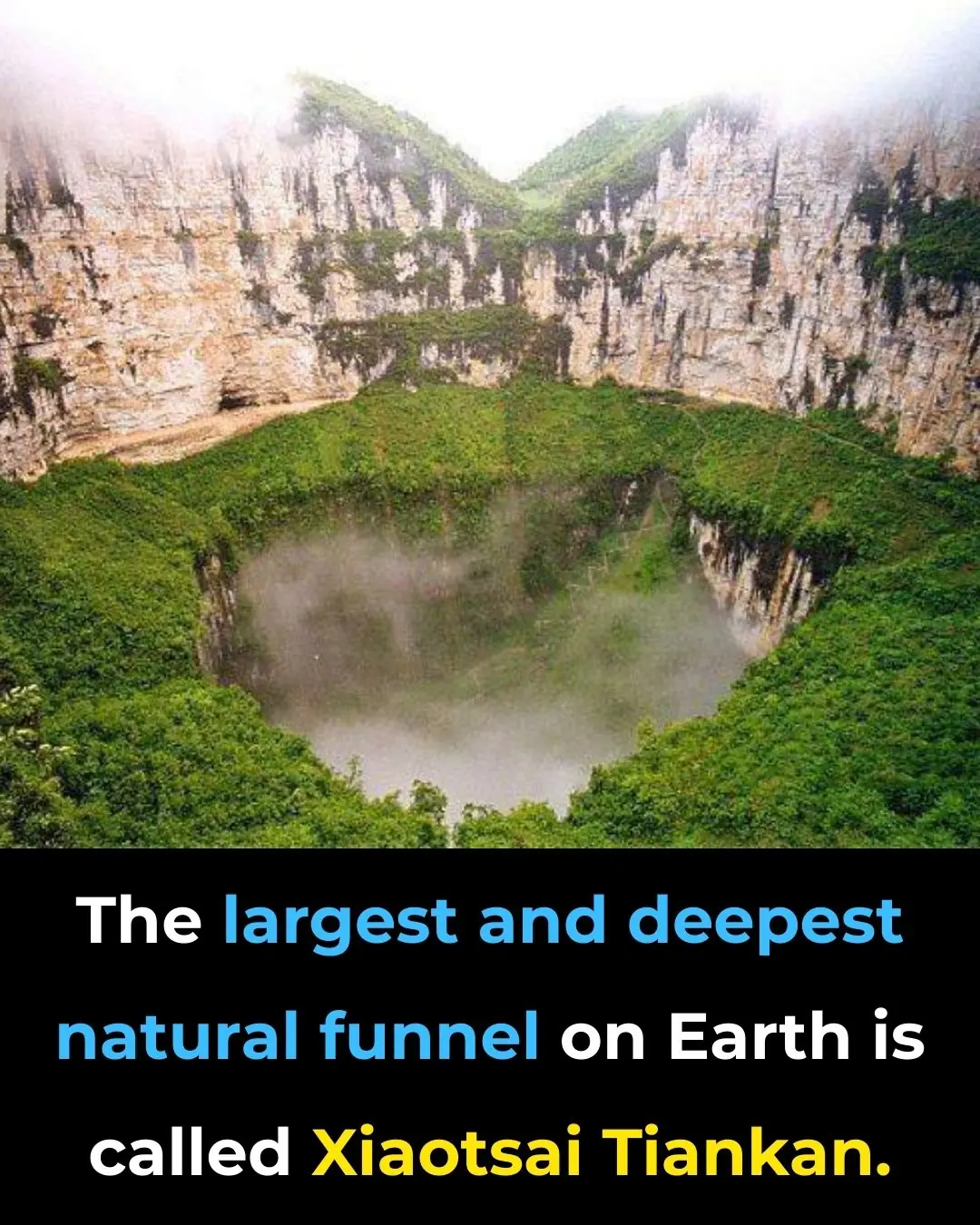
Study Reveals How Earth’s Orbit Triggers Ice Ages, And There’s One in The Next 11,000 Years

Earth’s climate history has been a dramatic roller-coaster ride of fluctuation, shifting from relatively warm periods to icy epochs of widespread glaciation, only to return again to the more temperate conditions we experience today. These dramatic changes, known as Quaternary ice ages, are part of a larger pattern of long-term climate variability that has shaped the planet for millions of years.
But what actually triggers these massive glacial events? For decades, scientists have suspected that subtle changes in Earth’s orbit around the Sun play a major role. Now, new research has revealed a precise and predictable relationship between these orbital shifts and the timing of ice ages—offering a powerful new tool to forecast Earth's long-term climate future.
“The link between slight changes in axial tilt and orbital geometry and the waxing and waning of continental ice sheets represents one of the oldest mysteries in climate science,” said Earth scientist Stephen Barker of Cardiff University, speaking to ScienceAlert. “It’s a fundamental gap in our understanding of the climate system. Enhancing our knowledge of how Earth’s dynamic climate system functions is crucial if we want to accurately predict future climate shifts.”
The Complex Geometry of Earth’s Orbit
Earth’s orbit around the Sun isn’t a perfect circle—it’s slightly elliptical, a shape known as orbital eccentricity. This means Earth’s distance from the Sun varies throughout the year, influencing the amount of solar energy the planet receives.
In addition to this, the orientation of Earth's orbit in space slowly changes over time, a phenomenon called orbital precession. Meanwhile, the tilt of Earth’s axis—referred to as obliquity—also fluctuates. These three orbital factors influence how solar energy is distributed across the globe and throughout the seasons.
These slow but regular changes, collectively known as Milankovitch cycles, occur on timescales of approximately 20,000, 40,000, 100,000, and even 400,000 years. They have long been associated with periods of warming and cooling, but pinpointing exactly how each cycle contributes to glaciation has proven to be immensely difficult.
“Earth’s climate is an interconnected system of complex processes,” Barker noted. “Modeling these over glacial timescales requires immense computational resources—and even then, it’s difficult to quantify each process independently.”
A New Breakthrough in Climate Understanding
One of the long-standing puzzles is why, over the past 800,000 years, ice ages have ended in a cycle of roughly every 100,000 years. While precession and obliquity are known to drive climate changes, no clear link had been established between these cycles and the precise end—or onset—of glacial periods.
To unravel this, Barker and his colleagues turned to the geological record, specifically by analyzing the ratio of oxygen isotopes in deep-sea sediments. These isotopes, preserved in the fossilized shells of microscopic marine organisms called foraminifera, serve as a reliable proxy for the volume of continental ice sheets over time.
Using this data, the researchers created a high-resolution timeline of glacial and interglacial periods. When they compared this against Earth's orbital precession and obliquity, a striking pattern emerged: the timing of ice age transitions aligned closely with specific interactions between these two orbital factors.
Here’s what they found:
-
Obliquity (axial tilt) is the primary driver for the onset of glaciation.
-
The end of an ice age (deglaciation), however, requires a very specific alignment between precession and obliquity.
This relationship not only explains the mysterious 100,000-year cycle but also confirms that ice ages are deterministic, not random—meaning they follow predictable orbital patterns.
“I was really excited when I saw the relationship between orbital phasing and the shape of the climate curve across these well-known transitions,” Barker said.
“These curves have been around for decades, studied countless times—including by me—but the connection we found had remained hidden until now.”
What This Means for the Future
This discovery has profound implications. For one, it suggests that Earth is currently on a path toward another ice age, due to a gradual decline in axial tilt. According to the team’s calculations, the next ice age could begin within the next 11,000 years—unless something, or someone, interferes.
And that “someone” is humanity.
“According to the latest IPCC reports, human activities—particularly greenhouse gas emissions—have already begun to disrupt the natural trajectory of Earth’s climate,” Barker explained.
This means that while Earth’s orbit might prepare the planet for another glaciation, human influence could override this natural cycle. By comparing predicted future climates to what would have occurred naturally—without anthropogenic interference—we can better understand the full magnitude of our impact.
“At present, projections of future climate change are made relative to modern or pre-industrial conditions,” Barker said.
“But we believe it’s crucial to also consider the natural, orbital-driven climate baseline—what might have happened in a world untouched by industrialization. This comparison will help us quantify humanity’s influence over the coming millennia.”
The research, published in Science, represents a significant step forward in understanding the grand-scale mechanics of Earth’s climate. It gives scientists not just a clearer view of the past, but also a powerful framework for anticipating what lies ahead.
TL;DR
-
Earth’s ice ages are driven by predictable cycles in the planet’s orbit and axial tilt.
-
The onset of ice ages is controlled mainly by obliquity (axial tilt), while their end depends on a precise alignment of precession and obliquity.
-
This explains the long-standing mystery of the 100,000-year glaciation cycle.
-
The next ice age could begin in about 11,000 years—unless human-caused climate change overrides the natural pattern.
-
Understanding these mechanisms is vital for predicting the long-term impact of current climate actions.
News in the same category


Homeowner Resumes Backyard Treasure Hunt

7 Household Appliances That Drain More Power Than Your Air Conditioner—And Why I Regret Owning Them All
From constant-use devices like refrigerators to high-powered kitchen tools, every household has hidden electricity traps.

Another US doctors’ group breaks with federal policy, recommends COVID-19 vaccines for all adults

Donald Trump Says There Could Be People in Epstein Files Who ‘Don’t Deserve to Be’ There in Shocking Statement

Think Bottled Water Is Safer Think Again

5 Early Warning Signs of Cervical Cancer That 90% of Women Overlook
Cervical cancer is not a silent killer—it sends out warnings. The challenge is whether women notice and act on them in time.

8 Shocking Toilet Clues That Could Signal Cancer: Don’t Ignore These Early Warnings
Many people dismiss subtle changes in bathroom habits as minor or temporary issues. However, certain unusual signs when you go to the toilet could be early red flags of serious health problems. Recognizing them in time can make the difference between earl

This 3,200-Year-Old Tree Is So Big, It’s Never Been Captured In A Single Photograph…

Travel Coast-to-Coast by Train and See America’s Greatest Sites For Just Over $200

Descend Into the Heavenly Pit: Exploring Xiaozhai Tiankeng, the World’s Deepest Sinkhole

The Walking Trees of Ecuador: They Reportedly Move Up to 20 Meters Per Year

How to See Halos, Sun Dogs and Other Delights of the Daytime Sky

When someone in the family passes away, you should know that you should not keep these 4 relics for your children and grandchildren.

Student dies by suicide after undergoing a beard transplant in Turkey from an ‘estate agent posing as a surgeon’

The Sun Begins Killing off Elon Musk’s Starlink Satellites as Scientists Sound Alarm

Never Leave a Charger in Outlet Without Phone. Here Are the Top 6 Reasons Why

3 Coffee Types That Can Add Years to Your Life and Shield You from Heart Disease and Stroke
Enjoying two to three cups of ground, instant, or decaf coffee daily can be a powerful step toward a longer and healthier life.

Bananas Are Packed With Nutrients, But These 4 Groups Should Avoid Eating Too Many
Bananas are undeniably one of the most versatile and beneficial fruits. From boosting digestion to supporting heart health, they offer a wide range of nutrients. However, they are not suitable for everyone.
News Post

iPhone users slam latest update a 'downgrade' after noticing 'diabolically ugly' new features

Facebook users set to receive their share of $725,000,000 settlement as payments begin

Woman sends thousands of dollars to 'stranded astronaut' who was 'suffocating in space'

iPhone users warned to do one thing before updating to iOS 26

Guy Mocked for Dating 252-lb Woman

Homeowner Resumes Backyard Treasure Hunt

The Most Effective Ways to Get Rid of Bumps on Inner Thigh (Backed by Science)

Early Signs of Liver Damage & How to Strengthen Your Liver

Boil sweet potatoes, don't just add water

Why do old people often have many spots on their bodies?

Nothing phone brutally mock Samsung after they slammed Apple's latest iPhone

Medicinal uses of the plant

Mice are running around on the ceiling, do this immediately and they will disappear without a trace, without any cost.

Shingles Vaccine May Protect Against Dementia, New Study Suggests
Could a simple vaccine hold the key to protecting the brain against one of the most feared diseases of aging?

Foods Gout Patients Must Avoid at All Costs: Protect Your Health and Keep Painful Flare-Ups Away
Avoiding purine-heavy foods like organ meats, processed meats, certain fish, and yeast-based products can help reduce flare-ups and maintain joint health.

7 Household Appliances That Drain More Power Than Your Air Conditioner—And Why I Regret Owning Them All
From constant-use devices like refrigerators to high-powered kitchen tools, every household has hidden electricity traps.

Surgeons Face the Highest Mortality Risk Compared to Other Physicians, Study Finds
From elevated cancer rates to stress-induced cardiovascular disease, the profession carries health costs that demand greater awareness and intervention.

The Most Dangerous Time to Sleep: Why Going to Bed Late Can Harm Your Health

DIY Carrot Oil for Skin: Natural Remedy for Radiance and Anti-Aging
Homemade carrot oil is a simple, nutrient-packed solution for brighter, firmer, and deeply hydrated skin. Whether you choose the slow, nutrient-preserving sun infusion or the quick simmering method, this golden oil can rejuvenate your skin from the inside
